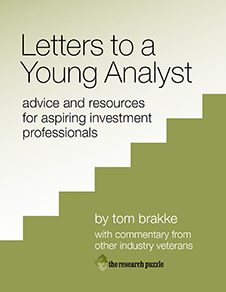
- Thursday, November 6th, 2008
- defrag this
-
Earlier this week, I attended Defrag 2008.Defrag | Here is the conference agenda. What is an investment process consultant doing hanging around with a bunch of techies? As the event’s website says, “In the largest sense, we’re all looking to augment the pace at which we achieve insights on raw data — to accelerate the ‘aha’ moment.” So I was there to try to do that for myself, for readers, and for clients. This is the first in a series of postings that will look at the interconnectedness of that quest, the investment world, and the social networking phenomenon that dominates how people think about information sharing and gathering today.
There were a few sessions that dealt directly with investment industry issues, the first of which amounted to a surprise attack. Paul KedroskyInfectious Greed | Kedrosky’s blog is required reading; he puts together an eclectic mix of information of interest to investors. did the opposite of most moderators at conferences (who tend to prep the panelists and then lob them softballs) by presenting without warning a challenging notion, that the trendy tools of the day tend to deal with trivialities, while the big information problems go unexamined and unsolved, as illustrated by the recent market meltdown. A number of important ideas were surfaced by the impromptu collision of hard questions and bright people orchestrated by Kedrosky.
They ranged from the macro (the need to “decomplexify” the financial system) to the micro (a realization that “we can’t solve the world’s problems in [the] sound-bite chunks” that have become the standard method of discourse). At one point, Kedrosky asserted that at every level (societal, organizational, individual) we are having difficulty sorting the signals from the noise, that it is essential for us to do so, and that perhaps a good place to start is by eliminating those sources of information (tools, services, organizations, and people) that have shown they don’t deserve our trust.
Can we build “better” structures? Can different design choices, from the nature of the tools to the risk/reward matrices within which they are used, help yield solutions to the big, real-world problems we face? Can changing the roles of the players and creating better constructs for gatekeeping and accountability yield more reliable information? These are but a few of the questions that echoed from Kedrosky’s attempt to move the group away from their comfort with the technology questions and onto the need to deliver solutions that matter.
Some other sessions also dealt with the investment world. Howard Lindzon’s talk included a bit about StockTwits,StockTwits | According to the site, “StockTwits is an open, community-powered idea and information service for investments. Users can eavesdrop on traders and investors, or contribute to the conversation and build their reputation as savvy market wizards.” a new Twitter-based service he has created. I confess to finding almost all things like this more “talking your portfolio” than anything else, where the value is in analyzing the changing structure of the information, as opposed to relying on the opinions themselves. The capability to do just that on a very wide scope is what drives the services of FirstRain,FirstRain | While I haven’t used this firm’s products, I have been monitoring its progress, and it seems to have found an attractive niche in the research space. Marty Betz, its chief technology officer, made the presentation at the conference. a research provider that scours the Internet to infer from changes in its composition where attractive investments might reside. In contrast to those edgy applications, a talk given by a representative of E*Trade was more about customer service and knowledge management than investments, but it was a powerful reminder that those of us in the investment business have to play by different rules, since he didn’t use slides and avoided some issues in order to not run afoul of regulatory strictures.
That’s it for the investment-specific stuff, and now the fun begins. The real opportunity to defrag investment organizations and the business itself comes from exploring the broader issues of how information flows and how decisions are made. Stay tuned.
